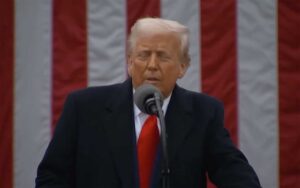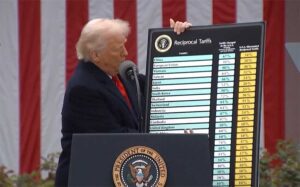Their professional relationship, starting with Senna, a documentary about Brazilian race-car driver Ayrton Senna, developed from necessity rather than grand design. Editor Gregers Sall also worked on the film, which saw a distinctive approach to documentary filmmaking that continues to evolve with Kapadia’s latest work, 2073.
For nine months while he waited for contracts for Senna to be finalized, Kapadia recalls, “I couldn’t hire a crew. I couldn’t hire an editor, I couldn’t film anything. I wasn’t getting paid. All I did was go to the office and watch YouTube clips … and in a way, for nine months, I was studying my main character and I got to know everything about him looking at his eyes.” This period of studying footage led to an archive-first approach that would define Kapadia and King’s later work. Says Kapadia, “Chris King came in quite late into the process but made it tighter and turned it into a commercial hit.”
Asif Kapadia’s Award-Winning Amy
When Kapadia and King began work on the moving movie about tragic singer Amy Winehouse, they faced new challenges integrating music meaningfully into the narrative. “The idea of putting lyrics on the screen, it’s the simplest thing,” Kapadia notes. “Because people kept saying, ‘Why are you putting the lyrics? We all know the words to ‘Back to Black.’ And I’m going, ‘I don’t think you do.’”
Another differentiator in Asif Kapadia’s work is his interview technique, which evolved significantly with each project. For Diego Maradona, Kapadia developed an intricate system using multiple translators for the Argentine football legend and live feedback from his London team. This complex approach allowed them to navigate Maradona’s particular way of speaking, which even native Spanish speakers sometimes struggled to understand.
Breaking the Mold with 2073
With their latest collab, 2073, Kapadia and King have pushed their methods further still. Working with cinematographer Bradford Young, they created future sequences using LED stage technology similar to that used in The Mandalorian. These scenes required a different approach to integration with documentary footage. “All of the people that she sees are from news footage, documentaries, and they’re all shots from around the world,” Kapadia explains of the underground sequences featuring actress Samantha Morton.
The project came together under unusual pressure, with the script written in three weeks to beat an impending writers strike. This led to the unprecedented decision to use two editing teams: King for documentary sequences and Sylvie Landra, known for her work with Luc Besson, handling dramatic portions. “I had two different creative brains for the two different films,” Kapadia notes. “The two editors were not on the film at the same time.”
The influence of their work can be seen in how audiences engage with their films in different contexts. “When I’m in the room, the film changes depending on who’s watching the film because different scenes have a different resonance to that audience,” Kapadia observes. In Spain, audiences focused on climate sequences that reflected floods in Valencia. In New York, political elements resonated more strongly.
With 2073, Kapadia explored how documentary techniques can engage with speculative scenarios while maintaining their commitment to archival authenticity. The film examines climate change, surveillance, and political power through a combination of footage and dramatic sequences that suggest new possibilities for documentary storytelling while remaining grounded in their established methods.
Asif Kapadia’s Unique Technique
2073’s technical challenges led to unexpected innovations. Working with LED screens, Chris King and Asif Kapadia discovered ways to integrate archival footage directly into dramatic scenes. “When you’re filming an actor in a very kind of futuristic way,” Kapadia explains, “you can have documentary footage playing in the background, so it becomes part of the scene itself.” This technique allowed them to blur the line between past and future in ways that served both the narrative and thematic elements of the film.
Their sound design process also evolved significantly. Having worked with composers like Antonio Pinto across multiple projects, Kapadia and King developed an approach where music could be written before footage was even edited. On 2073, they took this further, mixing electronic elements with orchestral scores to create a soundscape that bridges documentary and science fiction tones.
Kapadia and King’s handling of interviews has also grown more nuanced. Where once they might have relied on traditional sit-down conversations, they now employ a range of approaches. For 2073, they interviewed journalists from around the world, including Maria Ressa, Rana Ayyub, and Carole Cadwalladr. “Three women journalists who have decided their mission in a way is to hold their power and their leaders to account,” Kapadia explains. These interviews were then integrated into the film’s speculative framework in ways that blur the line between reporting and prophecy.
Their partnership also demonstrates the value of long-term creative relationships in filmmaking. Over multiple projects, they’ve developed a shorthand that allows them to work more efficiently while taking greater creative risks. King understands Kapadia’s visual instincts, while Kapadia trusts King’s sense of rhythm and pacing.
What Lies Ahead?
The future of Asif Kapadia and Chris King’s collaboration remains open-ended. With 2073, they’ve demonstrated that documentary techniques can be applied to speculative subjects without losing their grounding in reality. Their method of combining rigorous research with innovative presentation continues to yield new possibilities for nonfiction storytelling.
Through their years of working together, they’ve maintained a focus on practical problem-solving over theoretical approaches. When faced with technical challenges, they find concrete solutions rather than philosophical ones. This pragmatic attitude has allowed them to adapt their methods while maintaining consistency across projects.
Their work suggests new directions for documentary form while remaining grounded in traditional journalistic values. By combining archival footage with dramatic elements, they’ve found ways to address contemporary issues that might otherwise seem abstract or distant. The result is a body of work that engages with both past and future while remaining firmly rooted in present concerns.






